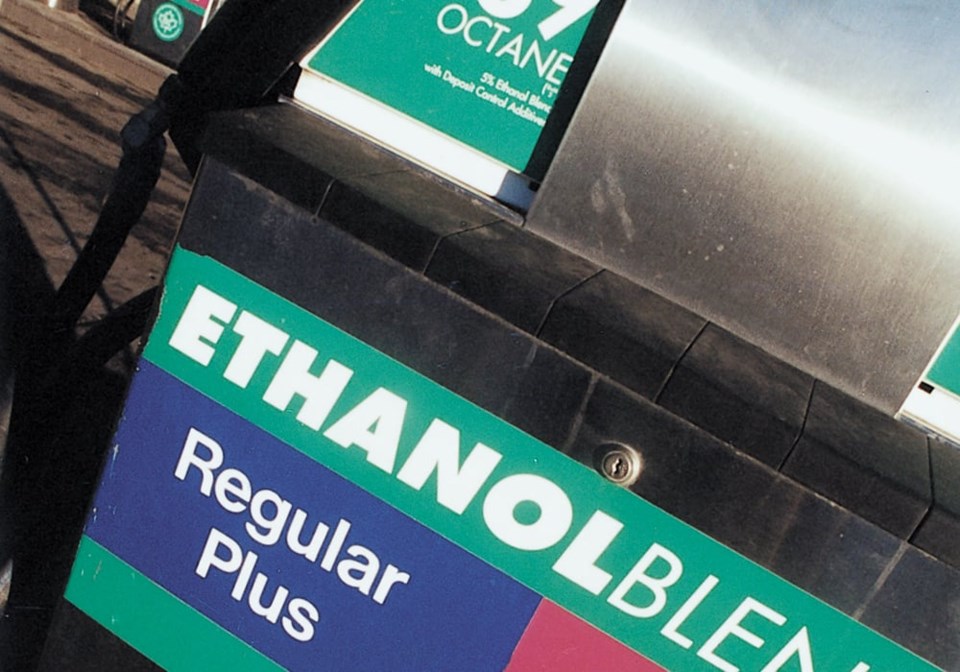WESTERN PRODUCER — The U.S. Environmental Protection Agency has tapped the brakes on the renewable diesel sector and the oilseed industry that feeds it, say analysts and officials.
In its final rule on renewable fuel obligations, the EPA made very modest changes to its disappointing proposed rule issued on Dec. 1, 2022.
It kept the 2023 biomass-based diesel obligation identical at 2.82 billion gallons.
The 2024 level was bumped up to 3.04 billion gallons from 2.89 billion gallons and the 2025 mandate was increased to 3.35 billion gallons from 2.95 billion gallons.
The new mandates received a resounding thumbs down from oilseed and biofuel groups in Canada and the United States.
“It alters the trajectory of the growth of the renewable diesel sector,” said MarketsFarm analyst Mike Jubinville.
Prior to the EPA’s proposed and final rule, that trajectory was “absolutely parabolic.”
“In fact, it was growing so fast that I wasn’t sure oilseed production in North America would be able to keep up with it,” he said.
Jubinville believes there will be much consternation around the board tables at oilseed processing firms and energy companies following this announcement.
Chris Vervaet, executive director of the Canadian Oilseed Processors Association, said the EPA’s final numbers were a disappointment for his member companies.
“This is really a missed opportunity in the short and medium term,” he said.
“It dampens the demand signal, there is no doubt about it.”
Canadian canola crushers have announced plans to expand annual capacity by 6.7 million tonnes, a 60 percent increase over current levels.
Vervaet wouldn’t speculate on what the EPA’s announcement means for those expansion plans, but he said crushers make investments based on the long-term outlook, and that still appears to be optimistic.
Scott Gerlt, chief economist for the American Soybean Association, was more pessimistic about the outlook.
“It leaves a lot of potential investment without an outlet,” he said.
Energy companies were planning on having nearly nine billion gallons of biodiesel and renewable diesel capacity in the United States by 2025.
The EPA’s mandated volume is less than half that amount, with 3.35 billion gallons slotted for bio-based diesel and another 580 million gallons in the advanced fuels category.
“A lot of these projects won’t make sense anymore,” said Gerlt.
Projects that have not yet broken ground may well get paused or cancelled. That could result in excess soybean crush capacity that is being built to provide those plants with feedstock, he said.
Jubinville said the EPA “isn’t even in the ballpark” of what the oilseed crush industry was anticipating.
“The market is delivering severe judgment on it here today with soy oil limit down,” he said in a June 21 interview.
Soy oil futures fell the maximum US$0.04 per pound on a day where almost every other crop commodity was experiencing a bull run due to dry conditions in the U.S. Midwest.
Ken Ball, canola analyst with PI Financial, said the EPA announcement caused a “very abrupt and violent reaction” in the soybean oil market.
All the money that poured into soybean oil futures in the weeks leading up to the announcement was suddenly trying to get out.
“The doorway just isn’t wide enough for them right now,” he said.
The announcement also weighed on the canola market, which was up slightly on Jun 21, but nowhere near the rally that corn, wheat and other commodities experienced.
Ball said the market will fully digest the EPA news in the days to come and then the focus will return to weather.
He doesn’t think the EPA announcement will lead to any big changes in the U.S. supply and demand balance sheets for soybean oil, soybeans and canola.
“While the industry is disappointed in these numbers, I don’t think it’s going to have a radical impact, really,” said Ball.
Gerlt noted that the EPA is still calling for a 600-million-gallon increase in biomass-based diesel consumption over the next three years, so it’s not a total disaster.
“We’re happy to see it moving in the right direction, but it wasn’t enough,” he said.
Vervaet also noted that the EPA recognized the recently approved pathway for canola from Canada in the final rule. That was missing from the proposed rule., so it was an encouraging development.
The U.S. biodiesel and renewable diesel sector used 322 million pounds of canola oil in March, according to the U.S. Energy Information Administration, a 92 percent increase over February’s volumes.
“We fully envisioned that we would see more canola oil go to the U.S. following the approval of our pathway, and that’s exactly what has happened, and we’re pleased to see that,” said Vervaet.
Soybean oil use in March was 953 million lb. by comparison.
Kurt Kovarik, vice-president of federal affairs with Clean Fuels Alliance America, called the final rule extremely disappointing.
“EPA is undercutting the certainty that our industry hoped for from a three-year (Renewable Fuel Standard) rule,” he said in a news release.
Clean fuel producers, oilseed processors, fuel distributors and marketers have all made significant investments to expand the industry rapidly over the next several years.
He said the industry was responding to signals from U.S. president Joe Biden’s administration and Congress to decarbonize fuel markets, including aviation, marine and heavy-duty transport markets.
“The volumes EPA finalized today are not high enough to support those goals,” said Kovarik.
“It’s a shame that EPA failed to fully consider the data provided by other federal agencies and industry experts demonstrating the upward trajectory of our industry.”
He said the biggest disappointment is that the EPA ignored the hundreds of millions of gallons of biodiesel, renewable diesel and sustainable aviation fuel generated in the first half of 2023.
The EPA’s own public data shows that biomass-based diesel production increased by more than 30 percent, or 400 million gallons, in the first five months of the year compared to the same period a year ago.
Contact [email protected]



